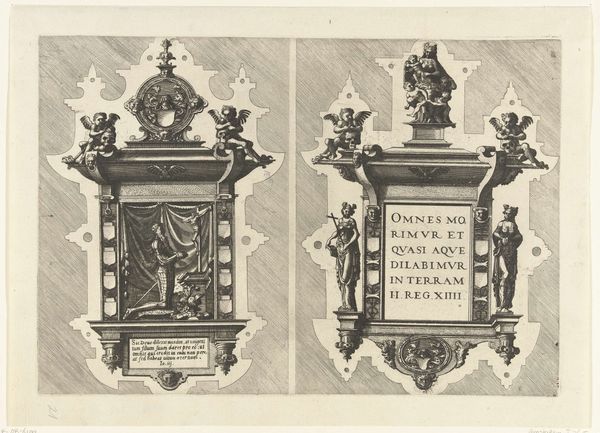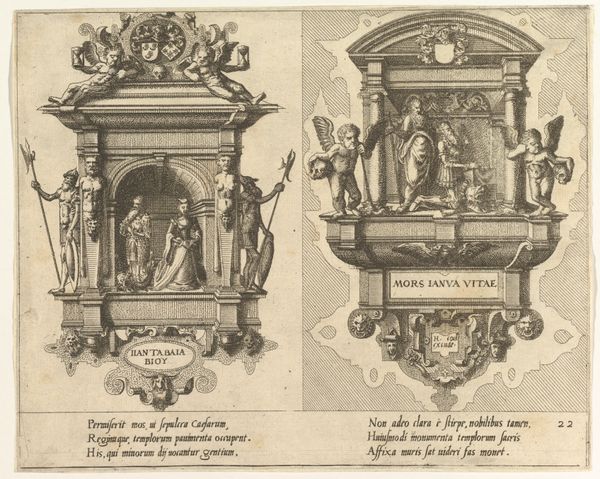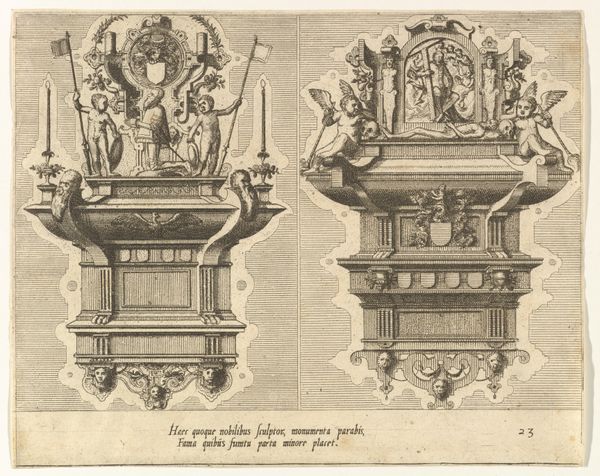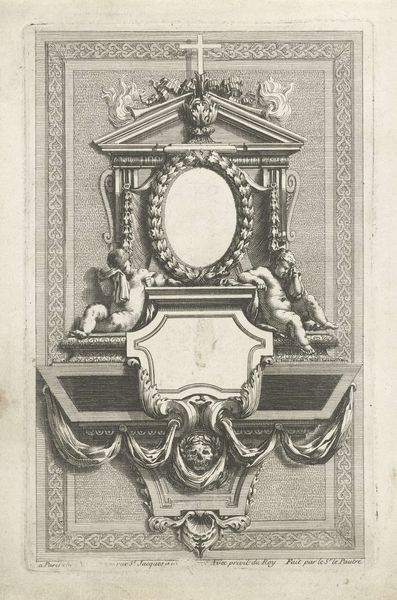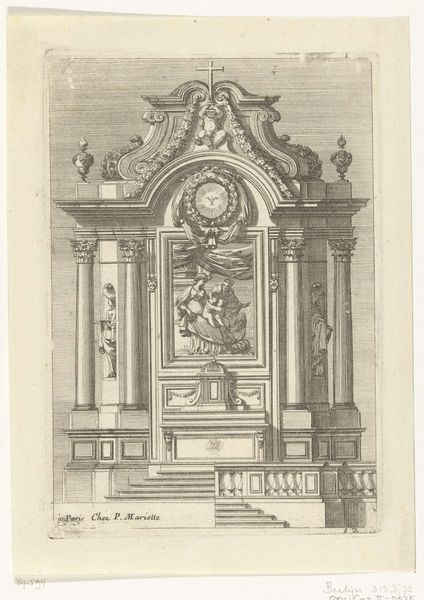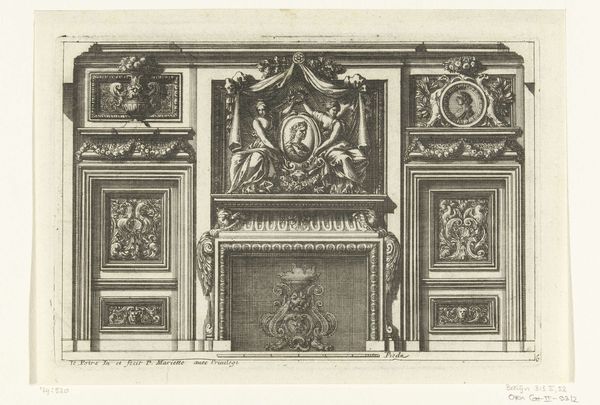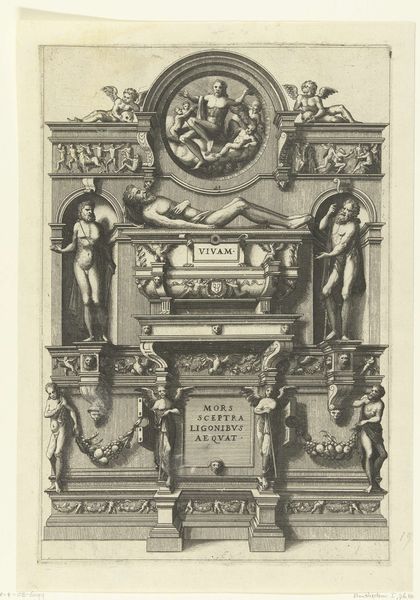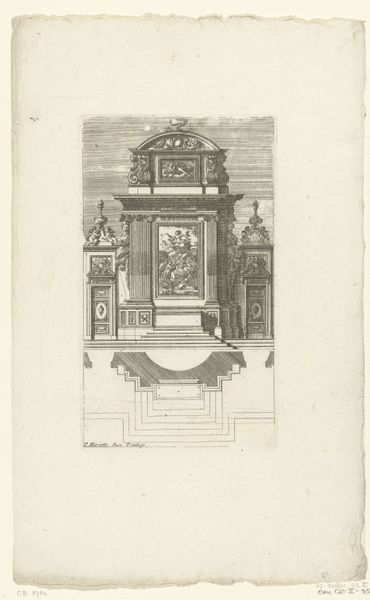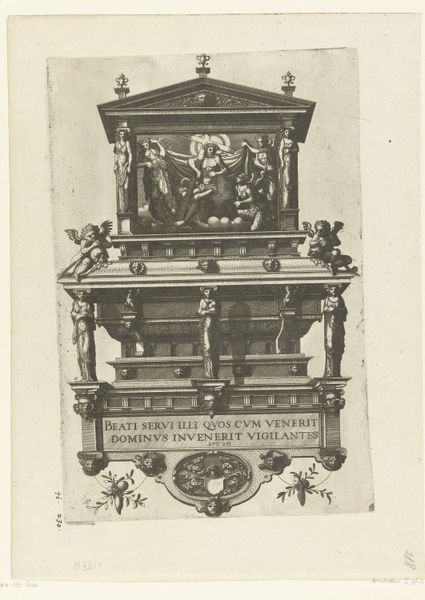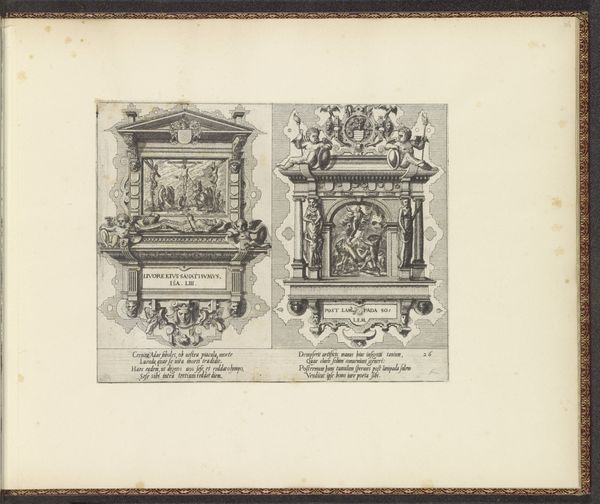
Twee epitafen met inscriptie 'Vigilate quia nescitis diem (...) 1557
0:00
0:00
johannesoflucasvandoetechum
Rijksmuseum
Dimensions: height 305 mm, width 202 mm
Copyright: Rijks Museum: Open Domain
Curator: The symmetry immediately grabs you, doesn't it? A carefully balanced pair of structures. Editor: Absolutely, a stark reminder of mortality. It gives off a vibe of baroque solemnity and ornamental morbidity. Can you tell me more about what we're seeing? Curator: Indeed. This engraving, dating back to 1557, comes from the hand of either Johannes or Lucas van Doetechum. The Rijksmuseum holds this compelling print; titled "Two epitaphs with inscription 'Vigilate quia nescitis diem (...)"—a sober command to "Watch, for you do not know the day." Editor: I notice cherubs juxtaposed with skulls—quite the contrast! On the left epitaph, figures huddle in a circle, seemingly unaware above the Latin inscription. Is that an admonition aimed at those enjoying life's pleasures? Curator: That's a keen observation. The inclusion of cherubs in proximity to the memento mori elements was very common then, meant to provide solace in the face of death, a hint of salvation and hope. Also the geometric pattern on the plate emphasizes a well-ordered society's attempt to process existential truths. Editor: And the text? The inscriptions seem crucial. Curator: Quite so. On the right epitaph, we have text which emphasizes that people must die only once, followed by judgment—a clear articulation of Christian doctrine intended to promote a social and moral outlook on everyday existence. It underscores that the temporal power structures were aligned with spiritual views on life after death, and therefore promoted religious orthodoxy as a guiding light in all social matters. Editor: The symbolic language here is fascinating – these objects clearly speak to deeper beliefs about justice, earthly life, and salvation. Curator: A view expressed with careful, if slightly severe, Renaissance aesthetics. Editor: These prints demonstrate a strong moral directive, presented elegantly within these intricate architectural renderings. Curator: A poignant meditation on the ephemeral, don’t you think? A beautiful piece prompting introspection.
Comments
No comments
Be the first to comment and join the conversation on the ultimate creative platform.
